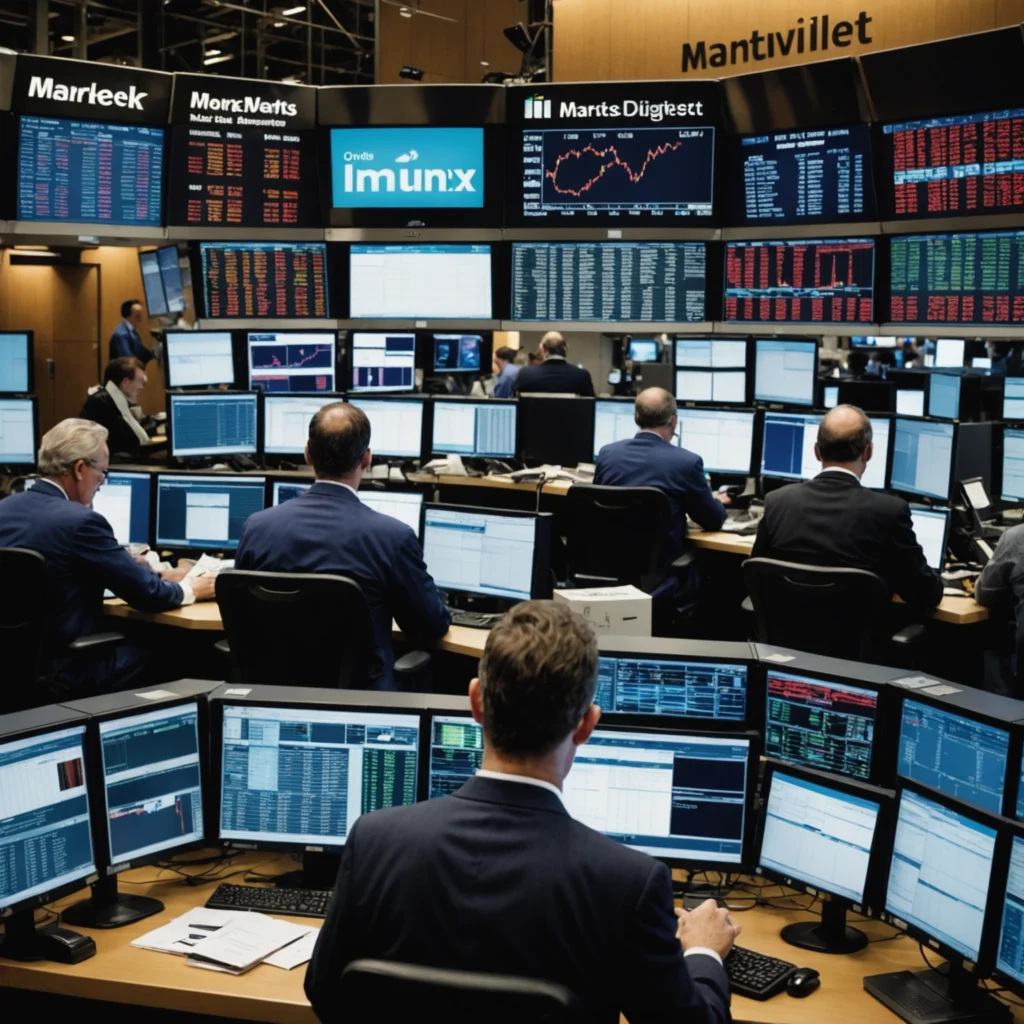
In recent weeks, market participants closely examined bank earnings after periods of unprecedented financial turmoil. Analysts and investors scrutinize every detail, and they review each report with intense focus. Moreover, market experts express optimism while acknowledging persistent challenges. Consequently, debates spark conversations about growth prospects and potential future risks. Simultaneously, regulatory agencies plan further reviews to ensure financial stability. Therefore, amid rapid changes and fresh insights, stakeholders remain vigilant and adaptive.
Market Dynamics Amid Turbulence
Economic indicators fluctuate dynamically as markets digest the latest bank earnings. Furthermore, experts note that many institutions report mixed performance. In addition, evolving regulatory standards encourage banks to boost transparency. Consequently, investors react swiftly to emerging news. Additionally, financial commentators observe a heightened sense of urgency as complexity escalates. Indeed, sharp market movements result from fluctuating earnings and revised forecasts. Therefore, numerous factors interplay to shape today’s volatile landscape.
Banking Environment
Banks report earnings with confidence and clarity. Moreover, they communicate strategic adjustments in response to market pressures. For instance, some institutions enhance cost management, while others prioritize digital transformation. In parallel, managers update stakeholders with new growth plans. Furthermore, banks share details about portfolio restructuring and risk management strategies. Consequently, market participants appreciate transparent messaging. Equally important, investors embrace detailed discussions that foster an environment of trust and accountability.
A meticulous review of earnings reports provides key insights into the current financial climate. Analysts emphasize detailed comparisons, and they compile high-quality data that informs market sentiment. Moreover, traders assess performance metrics critically. For example, net interest margins and nonperforming loans receive intense scrutiny; as a result, these figures guide investor decisions. Additionally, refined analytical methods enable experts to extract nuances and trends from earnings reports. Thus, the market remains dynamic and deeply analytical in its approach.
In light of the evolving scenario, key banking metrics emerge as decisive indicators. Listed below, crucial items offer clarity on performance:
• Consistent revenue growth
• Stable loan portfolios
• Enhanced digital service offerings
• Improved operational efficiency
• Strengthened capital ratios
Presented in a concise manner, the following table illustrates sample data from several major banks:
| Bank Name | Earnings (USD billions) | Year‐on‑Year Growth |
|---|---|---|
| Alpha Bank | 3.5 | 8% |
| Beta Financial | 2.8 | 5% |
| Gamma Trust | 4.1 | 10% |
| Delta Holdings | 3.0 | 6% |
Investor Sentiment and Outlook
Investors maintain cautious optimism while absorbing evolving market realities. Consequently, market participants increase risk assessment and adopt agile strategies. Additionally, research institutes publish periodic insights to clarify long‑term trends. For example, discussions on dividend policies, credit ratings, and loan portfolios occupy central positions during conference calls. Meanwhile, investors weigh potential benefits against volatility risks. Ever mindful of uncertainty, they base decisions on diversified research and evolving market signals. Therefore, prudent strategies integrate both caution and opportunity.
Global Market Reactions
Traders worldwide express a range of responses. Firstly, emerging markets adjust to fresh capital flows. Secondly, major economies record shifts in currency values and interest rates. Thirdly, developed markets experience recalibrated investment preferences. In addition, international observers report healthy debates on financial policy improvements. Moreover, global indices reflect shifting confidence amid turbulent economic phases. Equally, each region contributes unique insights that enrich the overall analysis. In summary, the global reaction remains highly diverse and adaptive.
Investors implement strategies through several coherent steps. They first review detailed performance data, and they then list key metrics. Next, they compile diverse opinions and finally decide on investing or holding positions. Accordingly, the approach remains systematic and data‑driven. Moreover, the market regularly educates participants through evolving methodologies and thorough financial reviews. Consequently, the continuous dialogue supports strategic investments while permitting dynamic responses to any emerging challenge.
Looking to the near future, experts forecast further adjustments in earnings and market volatility. In addition, advisors recommend that investors remain informed and alert. For example, a growing emphasis on technological innovation and economic diversification guides many institutions. Moreover, trends in cost management and risk reduction occupy central discussion points. Consequently, each development contributes to a layered understanding of potential market trajectories. Ultimately, forward‑looking strategies combine robust analyses with proactive decision‑making and agile operational adaptations, ensuring resilience amid uncertainty.
In conclusion, the sector navigates through complexities with clarity and determination. Additionally, banks reinforce their positions by investing in innovation and risk management. More importantly, market participants leverage detailed insights and thorough analyses. Therefore, the financial landscape continues to evolve with each earnings report. Meanwhile, investors adapt to changes by embracing versatile strategies and diversified portfolios. Finally, market watchers remain hopeful that continuous progress will restore stability and foster sustainable growth over the long term.




